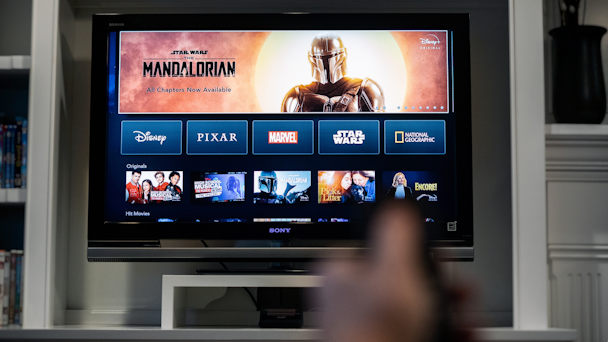To win DTC spend, streamers need to treat performance marketers like big brand advertisers
Direct-to-consumer marketers don’t want to settle for ‘remnant’ placements anymore, writes MNTN’s Chris Contreras.

/ Adobe Stock
Connected TV has completely redefined what ’premium’ viewing means.
It’s both an opportunity and a challenge to Hollywood studios, content channels, agencies and brands. On the plus side, people are watching more TV than ever before, thanks to the explosion of streaming channels. But media sellers have, understandably, struggled to keep up with this boom, and the quality of ad inventory has suffered.
This has created an ideal opportunity for direct-to-consumer (DTC) advertisers, who are eager to pick up the slack. But the DTC marketing approach needs to change as well.
If you want to know how much value CTV has the power to unlock, look no further than all the dollars flowing from DTC ad spend. Insider Intelligence research projects that DTC brands will spend $4.6bn on video advertising generally in 2023, up from $2.8bn in 2022 – a 64% lift.
According to proprietary MNTN data, DTC marketers raised their total ad spend on CTV 384% between Q1 and Q3 of 2022 – and that trajectory is still going strong in 2023.
It doesn’t take much to unlock greater DTC expenditures. Investment flows to channels that deliver results.
Retailers know that the same ads and messaging can grow stale quickly. When they get help from networks in crafting a variety of spots over time, they’re more likely to continue spending. If a DTC marketer knows that they can continually modify their ads and calls-to-action over, say, a six-month period, that flexibility gives the platform and the network the credibility that comes with offering continuity.
As streamers become increasingly reliant on ongoing relationships with advertisers, applying a little creative thinking toward DTC brands’ advertising needs can help maintain that critical momentum.
Advertisement
Watching ad-supported streaming grow
Streaming media is itself the ultimate direct-to-consumer viewing model. The first-party data coming from Netflix, Disney+ and Peacock, among others, make these networks natural allies for direct-to-consumer advertisers.
As the subscription model matures and the cost of content continues to soar, ad sales are expected to provide the necessary revenue gains to make it all possible.
And as traditional TV advertisers pull back on their marketing budgets in the face of a volatile economy, a diverse array of marketers – across industries from pharmaceuticals and wellness to beauty and housewares – are being courted to fill the gaps.
But attracting DTC spending won’t be as simple as offering a random commercial pod.
Advertisement
DTC’s premium window opens
In the past, the best DTC advertisers could hope for from traditional TV and cable network buys were cheap, unsold (aka ’remnant’) placements that were otherwise avoided by major marketers.
But ad-supported, ’premium’ CTV channels – Disney+, Netflix, Peacock and others – have vast libraries, and they know two things: they have a lot of inventory to sell; and if the quality of those ads isn’t on par with the quality of their content, they’ll lose audiences fast.
DTC brands – especially those who once avoided ’primetime’ TV advertising, be it for lack of budget or lack of immediate returns on spend – have the messaging focus and the targeting know-how to make the most of these premium spots. And now that it’s become both affordable and measurable, they’re rushing in to take advantage of it.
Suggested newsletters for you
DTC gets the red carpet treatment
Most DTC brands can’t spend millions of dollars on national TV advertising. Still, they do have hundreds of thousands, if not millions, of dollars in their advertising budgets every month. And that adds up.
The race to capture that spend has become frenzied in recent months. Continued economic volatility means that even the largest CTV ad sellers will be courting these advertisers more and more aggressively.
Marketers right now are prioritizing advertising efforts that generate leads and sales. This broad shift to performance plays perfectly to DTC brands’ existing strengths.
As big broadcasters and movie studios continue diving in and doubling down in the CTV space, there’s simply too much premium ad inventory for major household brands to fill all by themselves. Ad spending from automotives, consumer packaged goods, retail, restaurant and electronics companies is barely making a dent in the amount of available placements. That’s why the CTV content companies will likely keep up the red carpet treatment for DTC marketers for the foreseeable future.
Creativity and continuity
Every marketer expects to see their buys placed in brand-safe, contextually relevant environments. All brands want to be able to measure their impact on customers across platforms without running afoul of those customers’ privacy concerns.
But DTC companies need their ads to drive specific leads, sales and other much more concrete business goals. What other advertisers might consider nice-to-haves are DTC’s can’t-live-withouts.
In that sense, DTC needs the best of both worlds – and streaming networks have the power to deliver it.
DTC brands are already sold on TV. But if streamers want to keep them – to get these marketers to accept the higher CPMs that come with the medium – they won’t be able to skate by on the cost-effectiveness of CTV buys. They’ll need to deliver high-value creative executions, too.
Chris Contreras is chief customer officer at MNTN.
